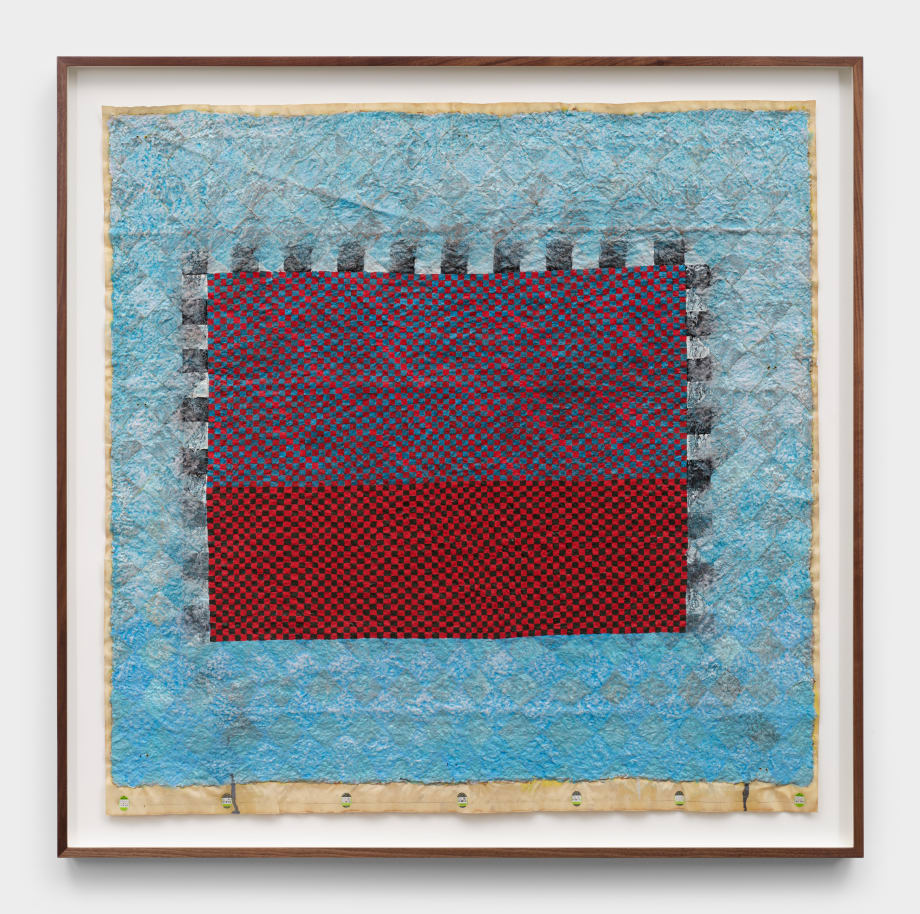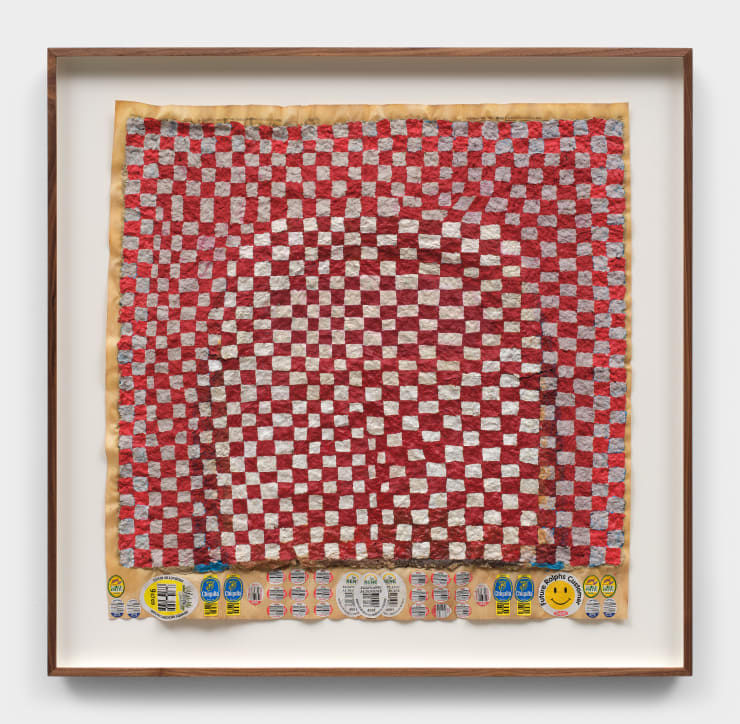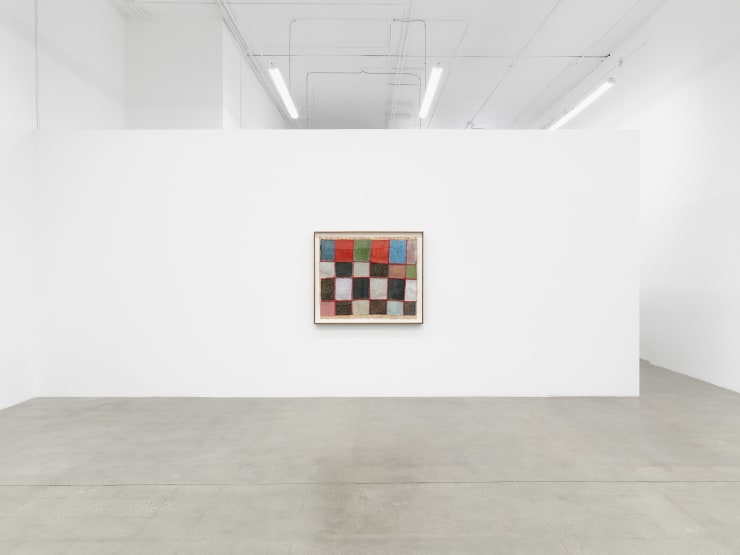Magnus Maxine "Riding the Blinds"
It is the substrata, the paper itself, that offers the works’ initial encounter, even though it is only nakedly available at the edges of the object. The undulating topography of the support greets me in advance of any hand-wrought demarcation or mark. My eye is allowed to grasp the thinness of the material, its necessary inadequacy in relation to the massing on top of it, its untimely agedness, its new translucency after slow saturation in the oil that seeps out from the painted zone.
This material, newspaper, is manifestly disposable. It is our culture’s most basic refuse while also carrying, daily, the weight of our transient fears, manias, and shame. These newspapers were kept, however. Their insides were pulped and pressed back onto their covers in large masses: ridges, swamps and cow-pies of slurry that obliterate the time-stamped, hyperbolic language of journalism and churn it into earthy, inchoate utterance. The eventual compost of all articulation, here.
The artist, Magnus Maxine, is asking for the paper to keep carrying that worldly weight while also providing an escape from knowing, from meaning. This weight and this lightness are brought out from within and placed back on to the surface. A resurfacing of the outer with the unmade-inner.
Over this landscape is layered an astonishingly intricate flesh. Pattern exceeds itself, becomes semi-dimensional, offers both breakage and repair. An image-field accumulates that is delicate and massive: a veil that is also the fitting of ancient wall-stones, a ship’s hull encrusted by a jeweler. It is read as the labor of tiny thousands. I am thinking “look at how many times this thing has been touched.”
There is a minute engagement being demanded. Tenderly-put pieces of oil paint, sometimes acknowledging an undergirding grid, more often deviating and contingent on what I can only imagine to be the hypersensitivity of the maker to the smallest vibrations of difference bounced back to her like sonar. All the entanglements of the nervous system pinging, registering, imprinting.
All of this is grasped in sequence. But underneath other forms are moving and coming forward in covert passage, carried by an invisible current. These surfacing objects are visible as shadowy, submerged halos. They are ruins, yes, but these abandoned configurations, these old tools, are revived by their submersion, becoming animate. They look like crude smiles, overgrown paths, mounds, blocks of un-made making. They are structures subsumed by the runaway logic of their own creation. Always approaching, they never do surface, but they cycle me back to the surface.
There is real splendor in this surface of surfacing, and the dazzlement imparted by it shelters utterances which are harsh and geological, old and apart from language. That’s the guile in the work. I bend down closer to this byzantine floor, I walk towards this weird rood screen. I want to see, and so I do see, the reciprocal approach of that which was buried. Should I say it comes from behind, or from below? Both directions seem true.
-Michael Kennedy Costa, 2023
-
 Magnus Maxine, The New York Times, Friday March 31, 2023, 2023
Magnus Maxine, The New York Times, Friday March 31, 2023, 2023 -
 Magnus Maxine, The New York Times, Sunday November 8, 2020, 2020-2023
Magnus Maxine, The New York Times, Sunday November 8, 2020, 2020-2023 -
 Magnus Maxine, The New York Times, Monday May 29, 2023, 2023
Magnus Maxine, The New York Times, Monday May 29, 2023, 2023 -
 Magnus Maxine, The Financial Times US Weekend Edition Saturday 27 May / Sunday 29 May 2023, 2023
Magnus Maxine, The Financial Times US Weekend Edition Saturday 27 May / Sunday 29 May 2023, 2023 -
 Magnus Maxine, The New York Times, Friday August 28, 2020, 2020-2023
Magnus Maxine, The New York Times, Friday August 28, 2020, 2020-2023 -
 Magnus Maxine, The New York Times, Monday August 31, 2020, 2020-2023
Magnus Maxine, The New York Times, Monday August 31, 2020, 2020-2023 -
 Magnus Maxine, The New York Times, Saturday August 29, 2020, 2020-2023
Magnus Maxine, The New York Times, Saturday August 29, 2020, 2020-2023 -
 Magnus Maxine, The New York Times, Sunday August 30, 2020 , 2020-2023
Magnus Maxine, The New York Times, Sunday August 30, 2020 , 2020-2023 -
 Magnus Maxine, The New York Times, Thursday August 27, 2020, 2020-2023
Magnus Maxine, The New York Times, Thursday August 27, 2020, 2020-2023 -
 Magnus Maxine, The New York Times, Wednesday, September 2, 2020, 2020-2023
Magnus Maxine, The New York Times, Wednesday, September 2, 2020, 2020-2023



















